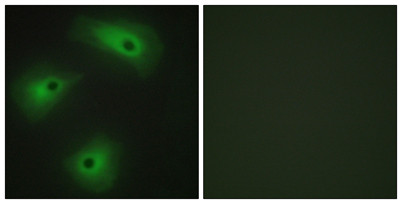Cookie-Einstellungen
Diese Website benutzt Cookies, die für den technischen Betrieb der Website erforderlich sind und stets gesetzt werden. Andere Cookies, die den Komfort bei Benutzung dieser Website erhöhen, der Direktwerbung dienen oder die Interaktion mit anderen Websites und sozialen Netzwerken vereinfachen sollen, werden nur mit Ihrer Zustimmung gesetzt.
Konfiguration
Technisch erforderlich
Diese Cookies sind für die Grundfunktionen des Shops notwendig.
"Alle Cookies ablehnen" Cookie
"Alle Cookies annehmen" Cookie
Ausgewählter Shop
CSRF-Token
Cookie-Einstellungen
FACT-Finder Tracking
Individuelle Preise
Kundenspezifisches Caching
Session
Währungswechsel
Komfortfunktionen
Diese Cookies werden genutzt um das Einkaufserlebnis noch ansprechender zu gestalten, beispielsweise für die Wiedererkennung des Besuchers.
Facebook-Seite in der rechten Blog - Sidebar anzeigen
Merkzettel
Statistik & Tracking
Endgeräteerkennung
Kauf- und Surfverhalten mit Google Tag Manager
Partnerprogramm

Bei Fragen nutzen Sie gerne unser Kontaktformular.
Bestellen Sie auch per E-Mail: info@biomol.com
Größere Menge gewünscht? Bulk-Anfrage
Bestellen Sie auch per E-Mail: info@biomol.com
Größere Menge gewünscht? Bulk-Anfrage
domain:The region spanning the fifth and sixth transmembrane domains probably forms the... mehr
Produktinformationen "Anti-TMEM16A"
domain:The region spanning the fifth and sixth transmembrane domains probably forms the pore-forming region.,function:Acts as a calcium-activated chloride channel. Required for normal tracheal development.,similarity:Belongs to the anoctamin family.,tissue specificity:Broadly expressed with higher levels in liver and skeletal muscle., Protein function: Calcium-activated chloride channel (CaCC) (PubMed:20056604, PubMed:22178883, PubMed:21984732, PubMed:22946059, PubMed:32487539). Plays a role in transepithelial anion transport and smooth muscle contraction. Required for the normal functioning of the interstitial cells of Cajal (ICCs) which generate electrical pacemaker activity in gastrointestinal smooth muscles. Acts as a major contributor to basal and stimulated chloride conductance in airway epithelial cells and plays an important role in tracheal cartilage development. Required for CFTR activation by enhancing endoplasmic reticulum Ca(2+) store release and is also required for CFTR membrane expression (PubMed:28963502). Required for basal and ATP-dependent mucus secretion in airways and intestine, probably by controlling exocytosis of mucus-filled granules by providing Ca(2+) to an apical signaling compartment. Contributes to airway mucus expression induced by interleukins IL3 and IL8 and by the asthma-associated protein CLCA1 and is required for expression of mucin MUC5AC (PubMed:33026825). However, was shown in another study not to be required for MUC5AC expression (PubMed:31732694). Plays a role in the propagation of Ca(2+) waves in Kolliker's organ in the cochlea and contributes to the refinement of auditory brainstem circuitries prior to hearing onset. In vomeronasal sensory neurons, modulates spontaneous firing patterns in the absence of stimuli as well as the firing pattern of pheromone- evoked activity. Responsible for calcium-activated chloride channel activity in type I taste cells of the vallate papillae. Acts as a heat sensor in nociceptive neurons. In dorsal root ganglion neurons, plays a role in mediating non-histaminergic Mas-related G-protein coupled receptor (MRGPR)- dependent itching, acting as a downstream effector of MRGPRs. In the developing brain, required for the Ca(2+)-dependent process extension of radial glial cells. [The UniProt Consortium] Recommended dilutions: Immunofluorescence: 1/200 - 1/1000. ELISA: 1/20000. Not yet tested in other applications.. Cellular localization: Cell membrane , Multi-pass membrane protein . Cytoplasm . Cytoplasmic localization seen in neoplastic cells of head and neck squamous cell carcinoma (HNSCC) tumors. .
| Schlagworte: | Anti-ANO1, Anti-Anoctamin-1, Anti-Transmembrane protein 16A, Anti-Oral cancer overexpressed protein 2, Anti-Tumor-amplified and overexpressed sequence 2, Anti-Discovered on gastrointestinal stromal tumors protein 1, TMEM16A rabbit pAb |
| Hersteller: | ELK Biotechnology |
| Hersteller-Nr: | ES6706 |
Eigenschaften
| Anwendung: | IF, ELISA |
| Antikörper-Typ: | Polyclonal |
| Konjugat: | No |
| Wirt: | Rabbit |
| Spezies-Reaktivität: | human, mouse, |
| Immunogen: | The antiserum was produced against synthesized peptide derived from human TM16A. AA range:921-970 |
| Format: | Antiserum |
Datenbank Information
| KEGG ID : | K19496 | Passende Produkte |
| UniProt ID : | Q5XXA6 | Passende Produkte |
| Gene ID | GeneID 55107 | Passende Produkte |
Handhabung & Sicherheit
| Lagerung: | -20°C |
| Versand: | +4°C (International: +4°C) |
Achtung
Nur für Forschungszwecke und Laboruntersuchungen: Nicht für die Anwendung im oder am Menschen!
Nur für Forschungszwecke und Laboruntersuchungen: Nicht für die Anwendung im oder am Menschen!
Hier kriegen Sie ein Zertifikat
Loggen Sie sich ein oder registrieren Sie sich, um Analysenzertifikate anzufordern.
Bewertungen lesen, schreiben und diskutieren... mehr
Kundenbewertungen für "Anti-TMEM16A"
Bewertung schreiben
Loggen Sie sich ein oder registrieren Sie sich, um eine Produktbewertung abzugeben.
Zuletzt angesehen


